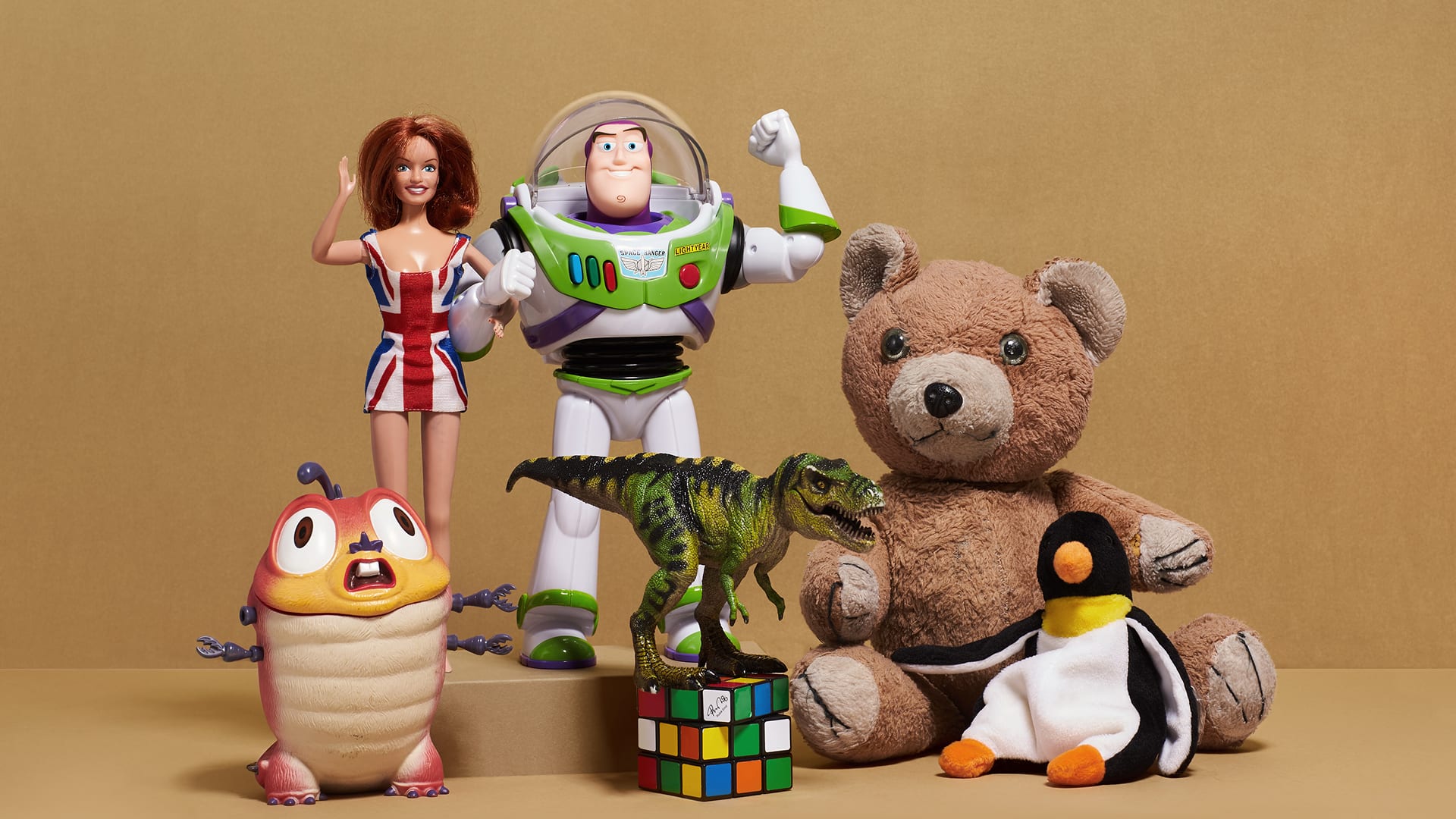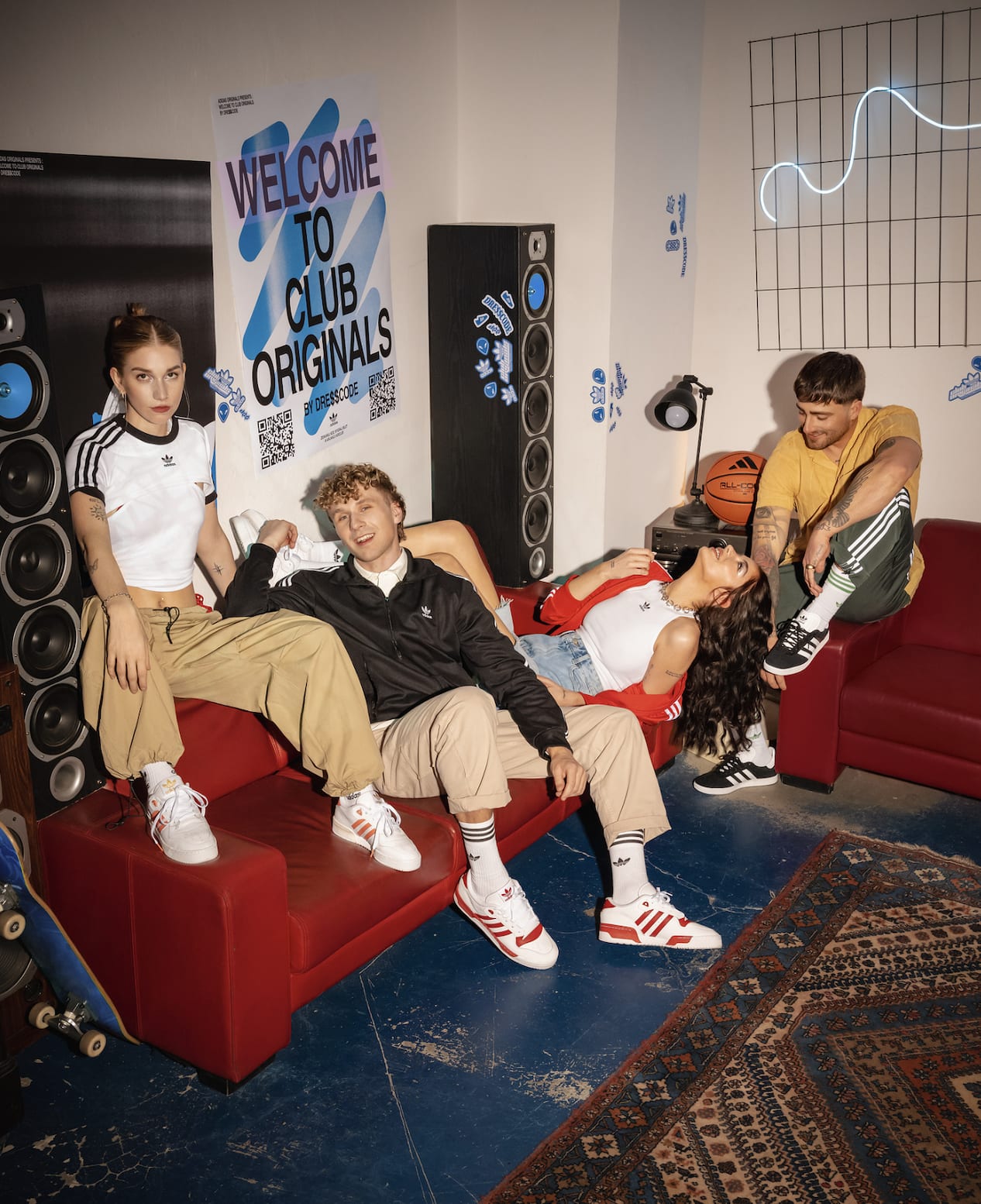Uncategorized
Dopamine Destinations
Megan Hotson
26/04/22
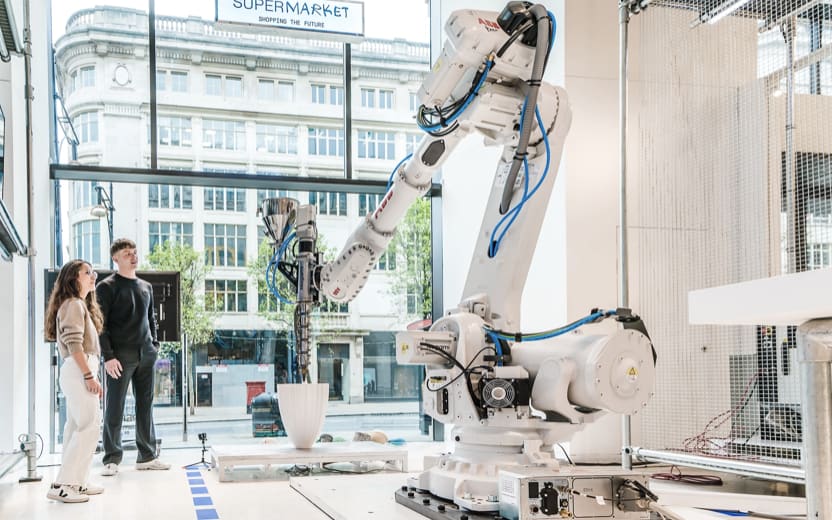
The future-led consumer is pushing brands to innovate their retail spaces to create a destination that will accommodate a growing desire for experience.
However, brands need to ensure their stores are a destination – not just somewhere to market their products for consumers to buy.
In the past, dopamine has been associated with the experience of buying something new or highly desired. This feeling has now been extended to epitomise the joy brought to customers by the brands trialling experiential concepts to make their spaces like no other.
Creating a store that is unique and experiential- full of innovative concepts that are peripheral to the product or services expected is key.
These destinations appeal to the post-pandemic consumer who want to slowly ease their way offline after two years spent online; these new and exciting stores generally harness an omni-channel, or cross-media approach– easing the digitally native, back into the real world in both a seamless and gradual way…
A couple of “Dopamine Destinations” that have caught our eye…
LEGO
Our first retail destination takes us abroad to NYC. LEGO have tapped into a joyful sense of escapism keenly expressed by both children and adults in the last 12 months. The heightened desire for a unique experience inspired LEGO to create a tech-enhanced store that provides consumers with interactive enjoyment in real life.
Lego have successfully created a store that doubles up as a playground- offering retailtainment for all those that visit. This dopamine destination is a great example of a brand blending the physical and digital worlds that were once separate during the pandemic, to create the “phygital”.

Their store features a bookable ‘Brick Lab’ where customers can scan their Lego creations to see them appear in the digital world on the lab’s screen-covered walls. Accompanying the lab is a ‘Minifigure Factory’ that allows Lego fans to become consumer-creators by letting them design a unique Lego figure on-screen and print it.
The interactivity of Lego’s retail space which is marketed as a space to play, not just shop – is what makes it more than a retail destination but a dopamine destination.
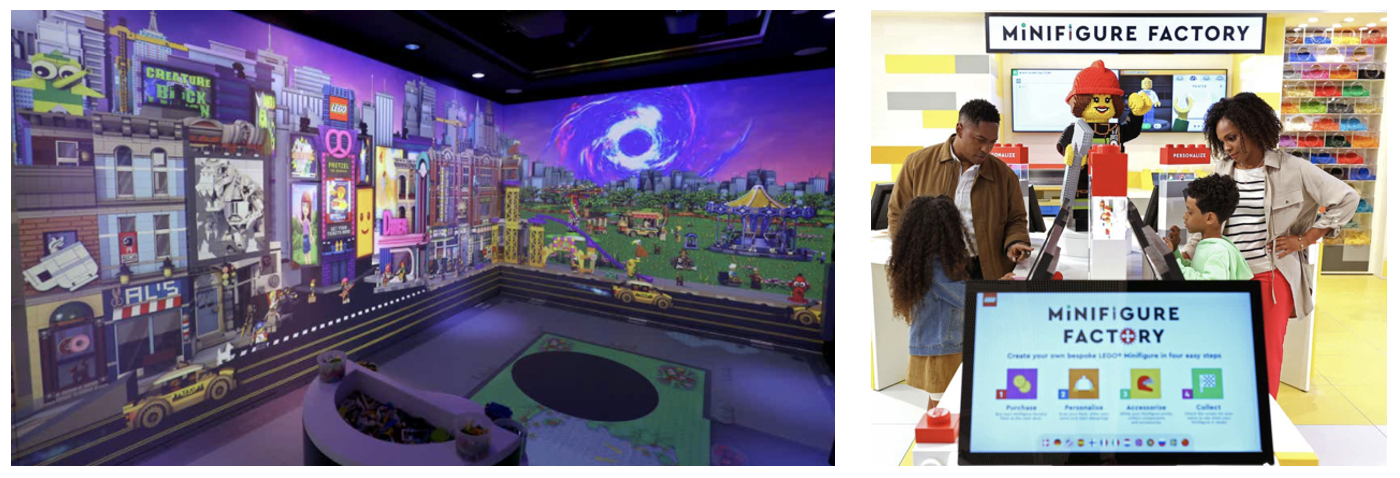
LEGO is no stranger to what it means to create a dopamine destination. Last year, Lego’s London pop-up brought colour, nostalgia, and fun to all that visited. Though no longer standing, it is one to take inspiration from. The pop-up was called Lego’s Launderette of Dreams.
British-Nigerian designer Yinka Ilori designed the space that featured 200,000 Lego bricks and a mural that customers could go to help build, disassemble and rebuild. It provided visitors with an experience not found anywhere else on the high-street, and was characterised by a maximalism and self-expression that left the public wanting more.
Selfridge’s ‘Supermarket’
The corner shop within Selfridges in London is known for promoting new and daring retail ventures and concepts. The most recent retail endeavour to occupy this space is unquestionably a dopamine destination – offering a plethora of futuristic and innovative products alongside interactive elements that make you wish it was not a temporary fixture…
“The Supermarket” is Selfridges four-week retail experiment, selling a whole host of out-of-this-world products, from fashion to food.
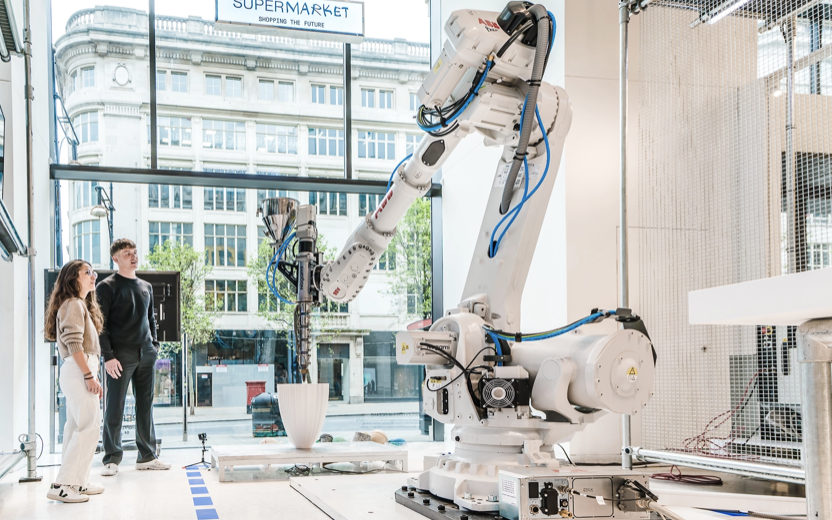
The Supermarket also reveals newer ideas or concepts of ownership with alternative jewellery pricing models as well as a range of NFT artworks that can be bought exclusively in-store. Exploring the meta-verse across this space appeals to curious consumer, and sparks conversation around consumption and physical ownership.
Today’s consumer is acutely aware of the climate crisis and need to re-articulate both the production and consumption of goods to encourage a more sustainable approach to buying and selling. The Supermarket reflects the growing need to explore other, more environmentally friendly options in a fun and engaging way. Visitors can watch a 3D robotic arm print in real life, and shop unique items, such as pineapple-leather based goods, or perfume made from captured CO2.
Offering people something that is not expected and is inspired by the future provides them with a sense of escapism. Customers can play with the ‘possible futures’ on offer in this creative playground.
By experimenting with new ideas or models, customers are taken- albeit temporarily, away from the everyday, into the future. The Supermarket will entice those who pass-by with its bold concepts, and maximalist approach to retail and the future of shopping habits by encouraging people to interact in real life with “the future”.
How to capitalise on this trend?
Be Bold!
It is all about maximalism. You might be used to hearing “less is more”- but when it comes to creating a dopamine destination it is more apt to say: “more if more”. If you want to entice the consumer into your store and have them come back you must make your spaces bold, and unique. Drivers of this trend are feelings of escapism, and self-expression from the increasing dominant demographic: GenZ.
According to WGSN’s trend curve analysing social media data across the last two years- maximalism began to see growth in June 2020. Not only this, but maximalism tops global google trend searches in the last year at +250%. Maximalist attitudes reflect growing consumer confidence and the rising diversity of styles still growing in the post-pandemic space.
There is a lower penetration of maximalism among retailers in 2022, but a strong interest and expression of it from consumers. This finding presents a crucial opportunity for retailers to lead the conversation on maximalism through creating a dopamine destination that will tantalise influencers, creatives, and shoppers alike who are all keen for a one-of-a-kind shopping experience.
Alongside making sure you tap into maximalism, brands should also ensure they tap into what is trending. Consumers are more likely to come back to your store if what you offer inside is changing or flexing to remain fresh and relevant. Focusing on the future, or on how the present can be made better for today’s consumer will not just attract your customer’s wallet, but their minds too.
